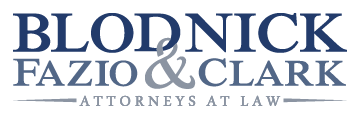On Friday, February 3, 2017, President Donald Trump issued an executive order directing the Secretary of the Treasury to consult with the heads of the member agencies of the Financial Stability Oversight Council, within 120 days, and report on which existing laws, guidance, treaties, record-keeping requirements, and other policies do not promote or inhibit the order’s Core Principles for Financial Regulation. These six generalized principles prioritize investor choice, economic growth and international competition, as well as traditional goals of financial oversight, such as analyzing and reporting risk, increasing accountability, and preventing taxpayer-funded bailouts. Although the Dodd-Frank Wall Street Reform and Consumer Protection Act was not specifically mentioned in the executive order, it is expected that the legislation will take a big hit. President Trump has been quoted as saying, “We expect to be cutting a lot of Dodd-Frank.”
What is the Dodd-Frank Wall Street Reform and Consumer Protection Act?
Dodd-Frank was a piece of legislation that was passed following the financial crisis of 2008. In 2010, it was passed by the Obama administration in an effort to reduce risk across the U.S. financial system. Named for the Act’s sponsors, U.S. Senator Christopher Dodd and U.S. Representative Barney Frank, the 2,300-page law includes 225 regulations and sets up several new government agencies, including the Consumer Financial Protection Bureau (CFPB) and the Financial Stability Oversight Council. Other agencies were created to prevent predatory mortgage lending. The Volker Rule of Dodd-Frank restricts the way major banking corporations are allowed to invest and does away with proprietary trading.
Why is Dodd-Frank controversial?
Dodd-Frank has been met with intense criticism by both Republican legislators and President Trump. Although, at face value, Dodd-Frank is a simple set of guidelines for banks to prevent them from indulging in risky loan procedures, it has justifiably had its critics. Dodd-Frank is intended to protect taxpayers from funding bailouts by limiting the risks that major financial firms are allowed to take. However, this legislation puts limits on how these businesses can invest and, therefore, how they turn a profit. Critics of Dodd-Frank believe that limiting the way financial institutions invest has held the U.S. back as a top global financial competitor.
Business leaders have also vocalized their disdain for Dodd-Frank’s higher reserve requirements that demanded banks to hold a higher percentage of their assets in cash than they were allowed to hold prior to the financial crash in 2008. Higher reserve requirements limit the ability to obtain marketable securities and connect businesses with buyers to take on bonds and make investments. The general consensus among critics of the legislation is that the issuance of higher reserve requirements on financial institutions makes them less likely to lend to startups and small businesses who do not hold a lot of collateral.
What is the Future of Dodd-Frank?
President Trump has been quoted as saying that his administration expects to get rid of a lot of Dodd-Frank because “I have so many people, they just can’t get any money because banks just won’t let them borrow because of the rules and regulations in Dodd-Frank.” By contrast, the Federal Reserve data revealed a 7 percent increase in total loans and leases from banks during the last three years.
Despite the Trump administration’s position, it is not likely that Congress will fully repeal Dodd-Frank altogether. To overturn the legislation, it would require 60 votes in the Senate and Republican legislators only hold 52. However, Congress may wish to amend certain provisions of Dodd-Frank and regulators appointed by the Trump administration may seek to reduce restrictions on the financial sector.
The laws and regulatory guidelines surrounding business practices are ever-changing. For this reason, business owners experience time-consuming stress when trying to alter their practices to align with new regulations. It is important for business owners and employers to consult an experienced New York business law attorney for guidance on how to navigate local, state, and federal laws. The New York business law attorneys at Blodnick Fazio & Associates PC understand the risk legal action can pose to a company and will assist you in implementing strategic business practices to stay in compliance and avoid fines. To schedule a consultation at our Long Island, New York business law office, call (516) 280-7105 or fill out our contact form.


